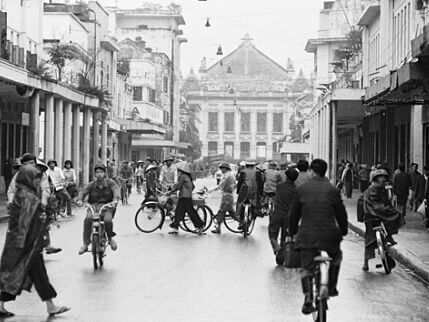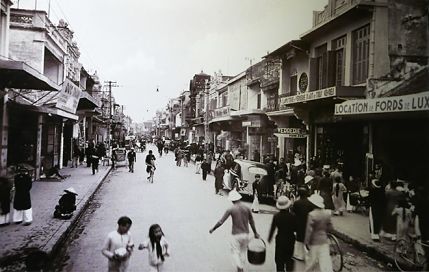Hanoi Street Names
Starting from the 11th century when King Ly Thai To transferred his seat of government to Thang Long, the streets, roads and alleys of the capital city have been considered as typical entities which symbolise the look, the structure, the daily activities and the spiritual lives of Ha Noi. Back in 1979, Hanoi Street Names had only 371 named streets, squares and parks.
By the start of 2003, that number had increased to 601. Yet while the capital was truly transformed by the historical, cultural and economic changes which took place over the 25-year period from 1979 to 2003, the rapid urban growth which has taken place in the years since 2003 has created hundreds of more new thoroughfares throughout the city.

In historical books written about Thang Long, its people and the events which have taken place in the ancient region of Hanoi, the words nhai, hang and Pho is the terms most commonly used to describe its streets, roads and alleyways.
Unfortunately, we have no exact information about who gave the streets their earliest names or why. Some names, such as pho Hong Tan (in the Buoi area), Tay nhai (western toad) and Chi tac hang (a paper-making alley at the western gate of the citadel), tell us only about their locations or the businesses carried on there,
The sources become somewhat clearer about the origins of street, road and alley names under the Le and Nguyen dynasties. The lyrics of the two old songs: “Let’s roam around Thang Long Citadel — Thirty-six guild streets there are in all…” streets — Hang Giay, Hang Bac, Hang Duong, Hang Ngang… at least indicate the names of more than 80 streets which existed in Hanoi at the end of the middle ages. Most of them were named after guilds and their specialities.
Hanoi Street Names in French Time
In the late 19th century, the French not only reshaped Hanoi along western lines but also imposed their own names on its streets. From that time onwards, new streets were named and existing streets renamed after famous Western historical figures. After 1945, these French names were largely replaced by Vietnamese names commemorating either great national historical figures or ancient places. Since that time the streets of the capital have been given more than 600 different names, both old and new.

During their 62 year-period of colonial domination (1883-1945), the French also changed the names of some city streets several times, For example, the name of Hoang Dieu Street was initially changed to rue Victor Hugo, but the street was later renamed rue Pasquier following the death of Governor-General Pierre Pasquier in 1934. Similarly, Dinh Tien Hoang Street initially became rue du Lac (Lake Street) but was subsequently renamed Boulevard Francis Garnier. Additionally, Dinh Le Street was initially named rue Intendance (Logistics Street) but later became rue Fourés.
My parents told me that I was born in Hang Cot. However, my birth certificate gives my place of birth as “rue Takou.” After meticulous research into the origins of the capital’s street names, I realised that the name “Takou” was a French transcription of Dagu, the name given to a Chinese defensive system of five large fortresses near Tianjin which was captured by an Anglo-French force in 1858-1860 in Order to open up foreign trade with that city. The French colonial authorities renamed Hang Cot and Hang Ga as Takou and Tien Tsin (Tianjin) in memory of their military campaign against the Chinese.
The names of the streets, roads and alleys in our cities are the product of centuries of history, and while many have changed frequently over the years, a study of them can reveal much about the fascinating evolution of our capital city.

